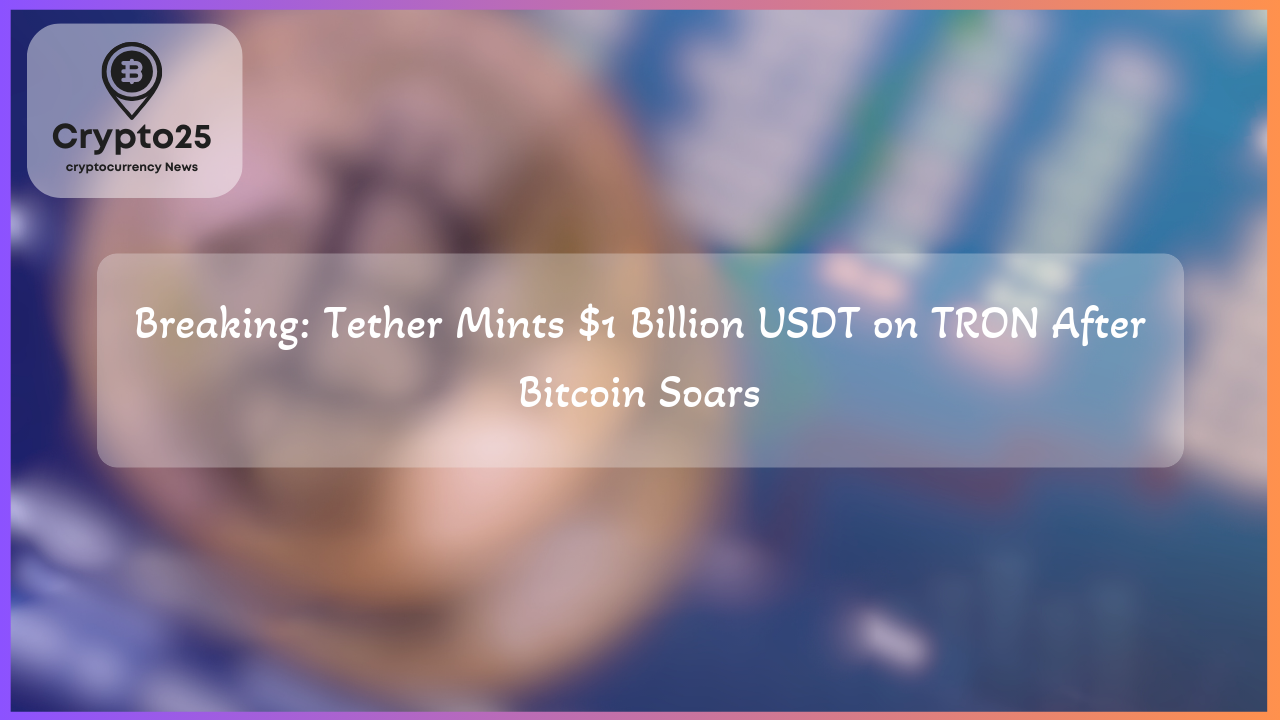
Tether’s recent minting activity is capturing global crypto attention as it unveils another significant issuance of $1 billion USDT on the TRON blockchain on April 21. This milestone highlights the increasing demand for stablecoins amid a surge in trading activity and a dynamic cryptocurrency landscape. With the total USDT supply now exceeding $10 billion for TRON just in 2025, let’s explore what this means for the crypto ecosystem.
### Tether’s $1 Billion TRON Mint: What It Means for Stablecoins
The recent $1 billion issuance by Tether on the TRON blockchain is anything but trivial. This latest transaction adds to the growing dominance of TRON as a preferred blockchain for stablecoin activity. With Tether minting a remarkable $10 billion USDT on TRON so far this year, it’s evident that the network plays a pivotal role in global crypto liquidity. Stablecoins like USDT are becoming essential for traders and institutions to navigate the volatile crypto market efficiently and securely.
One key driver of this trend is the ability of stablecoins to act as a reliable hedge against price swings. Simultaneously, their adoption is expanding because they offer faster fund transfers compared to traditional banking systems. TRON’s scalability, low transaction fees, and ease of adoption have helped increase its utility as a robust platform for stablecoin issuance, further solidifying its status in the world of decentralized finance (DeFi).
### The Strategic Importance of “Authorized but Not Issued” USDT
Interestingly, Tether’s CEO, Paolo Ardoino, clarified that while the $1 billion USDT tokens were minted, they are currently classified as “authorized but not issued.” Essentially, this means these tokens remain in inventory, ready to be deployed when the market demands higher liquidity. This operational strategy enables Tether to react swiftly to market changes while preventing an overabundance of unused tokens from entering circulation.
This tactful approach not only balances market dynamics but also demonstrates the sophisticated mechanisms large stablecoin issuers customize to avoid inflationary repercussions. Clearly, minting without immediate issuance hints at the proactive planning involved when responding to market demand surges—particularly during periods of heightened market activity like Bitcoin crossing critical price levels.
Blockchain data from Arkham Intelligence reflects this readiness, showing Tether’s strategic engagement with top exchanges like Binance, HTX, and Bybit. The analysis indicates that some of the freshly minted USDT may soon be circulated to meet rising global liquidity demands, especially given recent surges in crypto trading volume.
| Title | Details |
|---|---|
| Total USDT Supply | $144 Billion |
| TRON Issuance in 2025 | $10 Billion |
| Ethereum-Based Supply | $74 Billion |
| TRON-Based Supply | $68 Billion |
### Growing Stablecoin Supply Signals Elevated Crypto Activity
The increasing Tether issuance serves as a mirror reflecting the booming crypto market. Historically, spikes in stablecoin production have correlated with increased trading volumes or expectations of heightened market activity. Analysts speculate that Bitcoin’s recent rally past the $87,000 mark could have played an instrumental role in this latest mint. As Bitcoin gains traction as a digital asset, the cascading effects drive interest in stablecoin transactions for efficient diversification and risk management.
Moreover, Tether’s expanded presence on blockchains like TRON and Ethereum points to evolving usage trends. Although Ethereum continues to lead with a $74 billion USDT issuance, TRON is quickly catching up with $68 billion, becoming a key player in the stablecoin race. The flexibility that stablecoins provide, combined with network-specific advantages, facilitates fluid movement across DeFi ecosystems and centralized exchanges alike.
In conclusion, Tether’s $1 billion TRON mint not only emphasizes its significance in enabling crypto liquidity but reflects the broader demand for stablecoin assets globally. As markets adapt to increasing dynamics, stablecoins remain a cornerstone of blockchain innovation, and platforms like TRON are increasingly taking center stage in the digital finance revolution.
